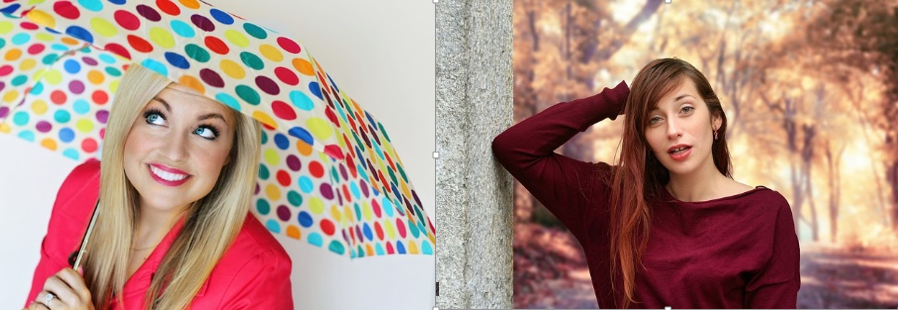Gwynn Scheltema
While our first response to fall might be thoughts of harvests, colourful leaves, Thanksgiving and delicious pies, for a writer, the symbolic meanings of fall are more profound—and useful—than you might think. In our writing, a reference to a cold winter day or a ray of sunshine can allude to more than its literal meaning.

Throughout history, cultures, science, and astrology have linked the seasons to the human life cycle and to nature’s influence on our lives. This connection is in our bones and it is universal. So writers can use seasonal symbols to express, heighten, or even play against feelings and the passing of time and age. And readers will pick up on those symbols and their meaning.
Think of F. Scott Fitzgerald’s The Great Gatsby. At the beginning of the novel, it is spring. Nick Caraway is at ease with the wealthy people he meets. As summer progresses, the heat intensifies and tensions start to rise. As autumn arrives, Gatsby dies and Nick’s warmth of feeling and his dreams wither.
What are the traditional symbolic meanings of autumn?
Maturity

In fall, the growing cycle gives us ripeness and maturity. The harvest is associated with abundance, prosperity and wealth. Humans too experience an “autumn”. If spring represents new birth and childhood, and summer symbolizes youth, autumn represents adulthood and maturity.
Girls on Fire by Robin Wasserman is set in damp, shadowy, late-autumn woods haunted by literal death that symbolizes the end of girlhood.
Change
Falling leaves symbolize change and even though they are brilliant in colour, we know what is soon to follow—winter. Fall brings a certain melancholy. We must prepare for an end. Our symbolic human autumn of maturity must prepare for the winter of old age and death.
In Washington Irving’s The Legend of Sleepy Hollow. This story takes place during fall with the town experiencing grief over the death of Ichabod Crane and as chilly autumn progresses, so do their fears of death and the Headless Horseman.
Preservation and reconnection

With the approach of winter, animals store food and create cozy hibernation spaces. We preserve the harvest and retreat indoors. We stop wandering and stay home. We tend to look emotionally inwards too, reconnecting with ourselves and those important to us. We consider the choices we have made, and the options still open to us.
Jacques Poulin’s book , Autumn Rounds, is a tale of love that arrives in the autumn of life. A man sees a marching band from his Quebec City apartment window, and motivated by his realization that life is slipping away makes a choice to join them.
Balance
Because day and night are the same length on the autumnal equinox, ancient cultures associated this day with the concept of balance. Astrologically, the sun enters Libra, symbolized by a pair of balanced scales. As we slow down after the business of summer, and with the harvest in, we take time to tap into the balance within us.
In October by Richard B. Wright, a man accompanies an old acquaintance on a final, improbable journey searching for answers in the autumn of his life.
But it doesn’t have to be all about sadness. Instead, we can think of death (and ultimate renewal) as a kind of letting go. We can look to our inner egos and patterns of behavior and let go of destructive attitudes. The idea of letting go also stresses the temporary nature of everything around us.
9 ways to use seasons as a writing device
Passage of time: Passing seasonal setting details running in the background of your story will help the reader know how slowly or quickly we are moving through time.
Mood: Although all emotions occur in all seasons, we tend to connect spring with hope/renewal; summer with joy/exuberance; autumn with melancholy/acceptance, and winter with sadness/loneliness. Using images, metaphor or setting details that evoke the appropriate season for the emotion, will heighten the mood.
As the horse crossed the line, Jim’s hopes fell like an entire tree of autumn leaves.
An hour passed and Mary did not show. Adam shifted on the cold bench, wished he’d brought a warmer sweater.

Image by beate bachmann from Pixabay
Subversion: Playing against the four seasons we know by having five seasons or only two will help readers accept that your story is set in another world.
Plot device: a body drowned in fall can only be discovered when winter ice melts. It gives the murderer time, but sets up a deadline for tension.
Irony: a couple fall in love in the dead of winter and break up in the summer.
Upset expectation: a character declines in spring and comes into their own in winter. This affirms that although humans are part of nature, they are not necessarily enslaved by its patterns.

Motifs/themes for a character. Amy is a “spring” character: optimistic, always learning something new; growing constantly; dresses in bright colours. Astrid is an “autumn” character: melancholy, always anticipating that something dark lies ahead; has red hair and wears a lot of brown.
Reveal emotions. In Beverly Cleary’s Emily’s Runaway Imagination, the story begins with spring and a feeling of welcome change. Almost exhilaration:
It seemed to Emily that it all began one bright spring day, a day meant for adventure. The weather was so warm Mama had let her take off her long stockings and put on her half socks for the first time since last fall. Breezes on her knees after a winter of stockings always made Emily feel as frisky as a spring lamb. The field that Emily could see from the kitchen window had turned blue with wild forget-me-nots and down in the pasture the trees, black silhouettes trimmed with abandoned bird nests throughout the soggy winter, were suddenly turning green.
Everywhere sap was rising, and Emily felt as if it was rising in her, too.
- Structure
Steven King’s Different Seasons is a book made up of four novellas. The stories themselves are not connected, but they each follow the symbolic meanings of the seasons to form a cohesive whole:
- Rita Hayworth and Shawshank Redemption (Hope Springs Eternal)
- Apt Pupil (Summer of Corruption)
- The Body (Fall from Innocence)
- The Breathing Method (A Winter’s Tale)
The Dragonlance Chronicles trilogy by Margaret Weis and Tracy Hickman also follow the natural cycle of nature:
- Book 1. Dragons of Autumn Twilight. The protagonists unite and become aware of the growing evil in the land
- Book 2. Dragons of Winter Night the heroes are separated, and not all escape unscathed.
- Book 3. Dragons of Spring Dawning, the heroes reunite and restore the Balance between Good and Evil
How do you put the seasons to work in your writing? Let us know in the comments below.



I was looking for inspirational thoughts about autumn to incorporate in my yoga teachings spiritually and this article took me on a nice inner journey. Thank you.
This article has really been helpful in my research on seasonal symbolism. Thank you writescape.
After 26 years of writing professionally, I read this post and gained a fresh new outlook on how to make stories (both fiction and non-fiction) come to life. Thank you, Writescape!
Thank you Dorothea!